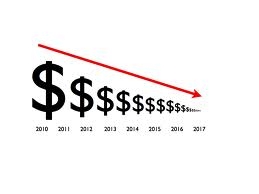
By Gareth Vaughan
Thousands of investors holding more than a billion dollars worth of bank bonds may be in for a low interest rate environment reality check with the banks able to call or reset their bonds this year at much lower interest rates than they're currently paying.
The bonds in questions are a NZ$350 million BNZ issue paying 8.42% that will be called, or have its interest rate reset, on June 15, an ANZ NZ$350 million issue paying 8.23% with a call, or reset date, on July 23, a NZ$370 million ASB issue that's currently paying annual interest of 8.77% due to be reset or called on November 15, and a NZ$250 million issue from France's Credit Agricole paying 10.04% with a call or reset looming on December 19.
All four bonds were issued in 2007, and priced at a margin over the five-year swap rate, in a significantly higher interest rate environment than today's one. If reset, all four will again be set at a margin over the five-year swap rate. During the second-half of 2007 this was generally significantly higher than where it is today (about 3.69%) peaking at 8.25% on November 8, 2007.
So based on the current five-year swap rate, the interest rate on the ANZ bond would nearly halve to 4.31%, or 62 basis points over swap, the ASB rate would fall 388 basis points to 4.89%, or 120 basis points over swap, the BNZ rate would fall 398 basis points to 4.44%, or 75 basis points over swap, and the Credit Agricole rate would drop a massive 444 basis points to 5.59%, or 1.90 basis points over swap.
The Credit Agricole perpetual deeply subordinated notes alone have 2,876 holders. The ANZ, ASB and BNZ issues are all subordinated callable bonds.
Credit Agricole hit hard in US & Europe
Since its New Zealand debt issue in late 2007, Credit Agricole has been badly hit by both major global financial crises recording €12 billion worth of writedowns and provisions from the US subprime mortgage market meltdown, and with operations in four of the European Union's so-called PIIGS countries in Greece, Italy, Spain and Portugal, being hard hit by the European Sovereign Debt Crisis with a €3.07 billion loss in the fourth quarter of 2011 alone.
The NZX debt market listed Credit Agricole notes are currently trading at just over half their face value, NZ$56.6 per NZ$100. The BNZ bonds are slightly above face value at NZ$102.805 per NZ$100 as are the ANZ bonds at NZ$102.215. The ASB bonds aren't listed.
Meanwhile, ANZ this month called a separate NZ$250 million subordinated callable bond that was paying 7.60% (five-year swap plus 76 basis points). It's replacing it with a seven-year bond, which it's seeking to raise up to NZ$250 million from, that will pay the higher of a minimum of 6.25%, or the aggregate of the seven-year swap rate plus an issue margin of 2.10% as of the March 9 (this Friday) rate set date.
More to come next year
Next year there's another NZ$1.545 billion worth of bank perpetual securities, with NZ$835 million through a single ANZ issue paying 9.66%, and two BNZ issues - NZ$450 million paying 9.89% and NZ$260 million paying 9.10% - with rate reset dates where investors could face the same falling income issue if the interest rate environment remains low. The ANZ issue is callable.
When the bank bond interest rates are reset, or the bonds are called, bondholders looking around for new places to put their money may struggle to find investments paying annual interest rates north of 7% from issuers with bankesque pedigree. And as for similar type investments, the highest advertised bank term deposit rate is currently 6% for five years from RaboDirect. See all advertised bank term deposit rates from one to five years here.
Investors' may be able to achieve better returns elsewhere, but it would be through investments generally deemed to be riskier, potentially with a higher chance of default.
No chart with that title exists.
This article was first published in our email for paid subscribers yesterday morning. See here for more details and to subscribe.
2 Comments
Yes, I can really identify with this. My income has gone down quite dramatically with the lower rates being paid on bonds etc. One way I have found to mitigate this is to grow your own veggies - from seed and then preaerve. For instance to buy sun dried tomatoes is expensive but to sun dry your own, well oven dry, can save a lot. To buy one lemon is expensive but etc etc. Using the bus instead of the car also saves BUT that is not a good example because I would not use the bus if I had to pay for it out of my income. But one does have to eat.
Any thread in a storm and bonds is bonds right !....
Have this with your toast.

We welcome your comments below. If you are not already registered, please register to comment.
Remember we welcome robust, respectful and insightful debate. We don't welcome abusive or defamatory comments and will de-register those repeatedly making such comments. Our current comment policy is here.